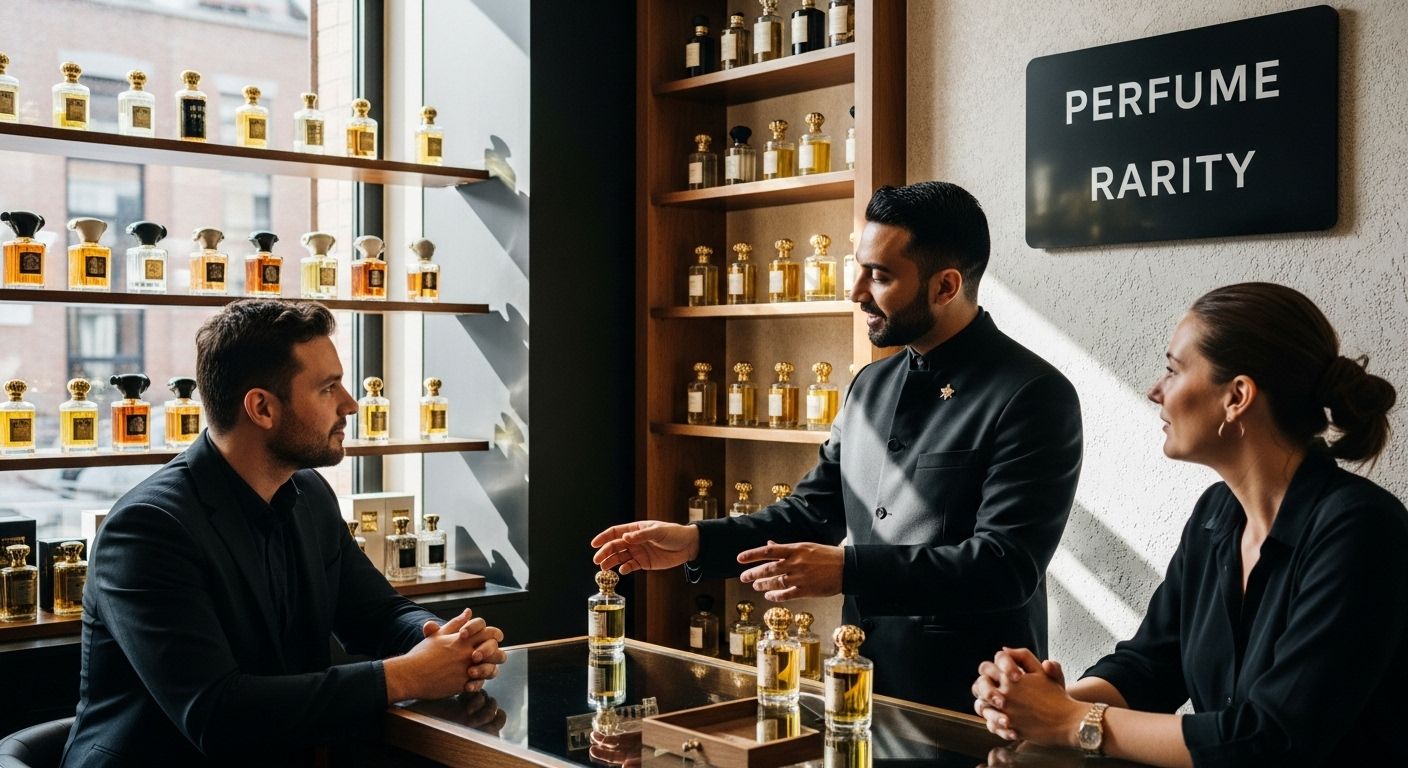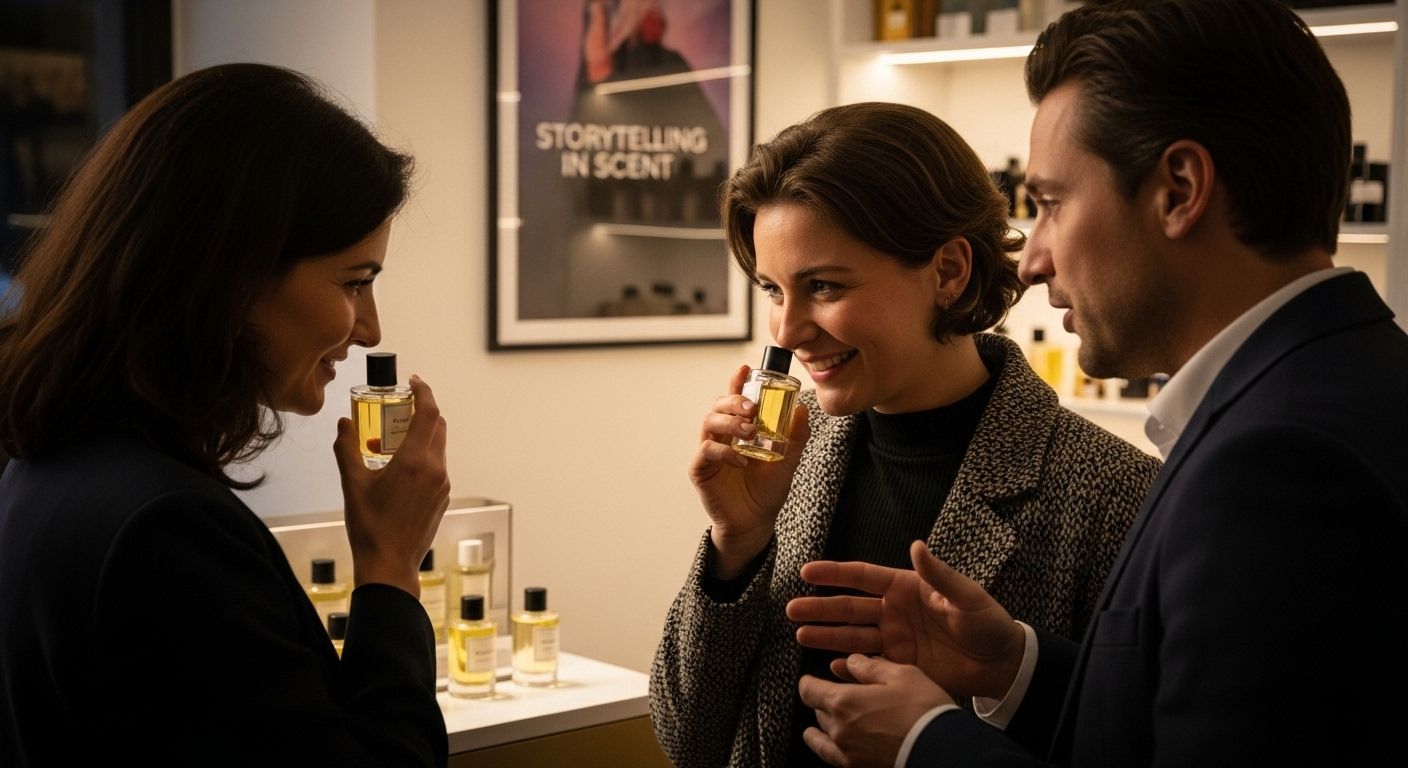
Understanding the Role of Storytelling in Scent
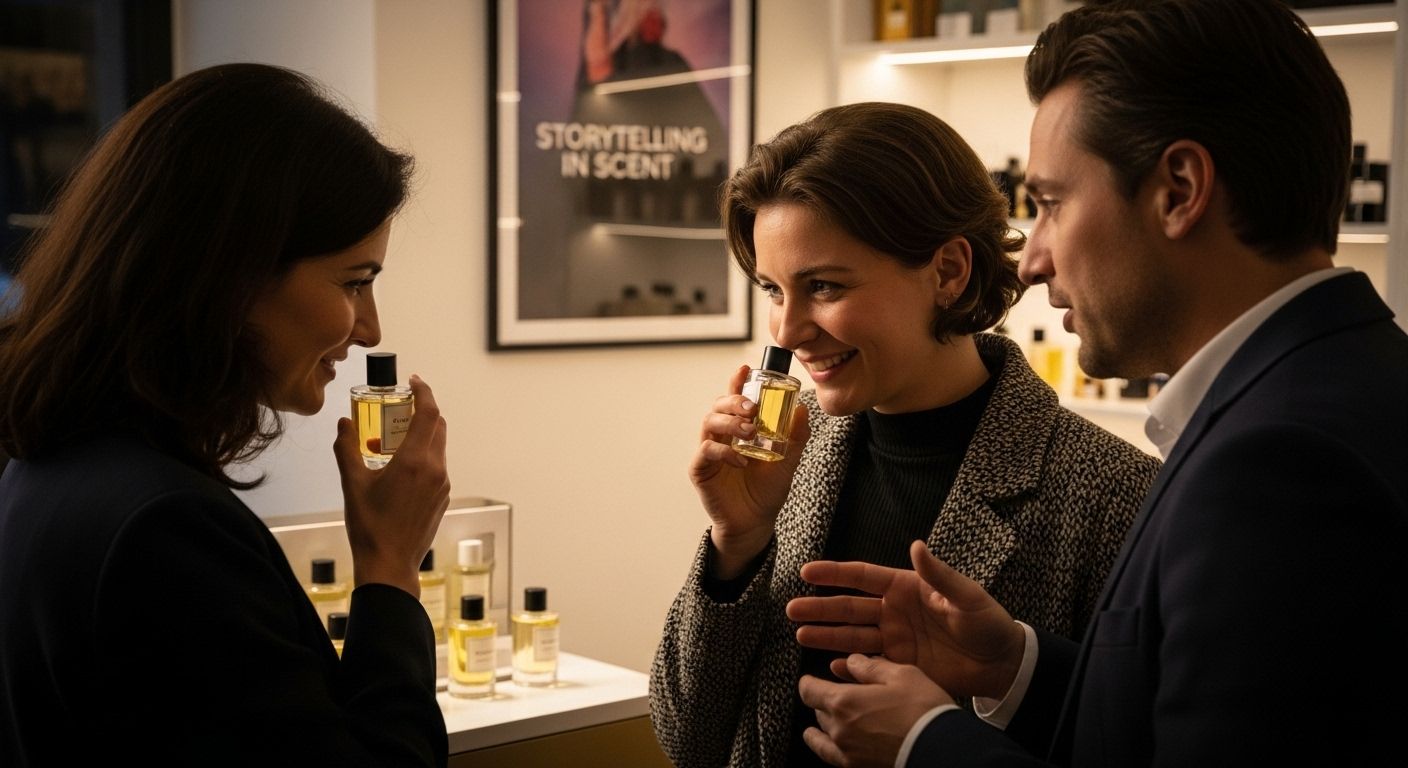
Fragrances do much more than just smell nice. They can communicate entire stories and unlock memories that words often cannot even reach. Studies show a single scent can instantly trigger emotional memories by activating your brain’s limbic system, bypassing logic completely. Most people think perfume is just about smelling good but in reality, creating scent involves building intricate storylines, cultural memories, and personal journeys right inside a bottle.
Table of Contents
- What Is Storytelling In Scent And Its Importance?
- The Psychological Impact Of Scent And Narrative
- How Storytelling Shapes The Perfume Experience
- The Integration Of Culture And Emotion In Fragrance Narratives
Quick Summary
| Takeaway | Explanation |
|---|---|
| Scent communicates emotions profoundly | Fragrances can convey complex emotional narratives through olfactory experiences without the need for words. |
| Scents trigger memory recall instantly | The Proust Effect shows how specific smells can evoke significant personal memories, enhancing emotional connection. |
| Multisensory storytelling deepens experiences | Perfumers layer notes to create immersive narratives, turning scent into a multidimensional journey of feelings. |
| Cultural context enriches fragrance meaning | Fragrances encode collective memories and cultural experiences, linking personal stories to broader societal narratives. |
| Personal interpretation is key | Each individual’s unique experiences shape their interpretation of scents, making fragrance a personal storytelling medium. |
What is Storytelling in Scent and Its Importance?
Storytelling in scent represents a sophisticated narrative technique where fragrances are intentionally crafted to communicate emotional experiences, cultural memories, and personal journeys through olfactory sensations. This innovative approach transforms perfumery from mere fragrance creation into a profound communication medium that transcends traditional sensory boundaries.
The Neurological Foundation of Scent Narratives
Olfactory storytelling operates through intricate neural pathways that directly connect with the limbic system, our brain’s emotional processing center. Research from neuroscience journals reveals that scents can bypass rational thought, triggering immediate emotional and memory-based responses. This unique neurological connection enables perfumers to design fragrances that communicate complex narratives without using words.
The table below highlights the key characteristics and mechanisms of scent storytelling, providing a clear overview of how fragrances communicate narratives through olfactory experiences.
| Key Characteristic | Description |
|---|---|
| Emotional Immediacy | Scents create instant emotional responses by directly activating the limbic system. |
| Memory Activation | Fragrances can trigger recollection of personal and cultural memories without conscious effort. |
| Subconscious Communication | Olfactory messages often bypass rational analysis and influence feelings on a deep level. |
| Personal Interpretation | Each person perceives a scent’s story differently based on their unique life experiences. |
| Layered Compositional Structure | Top, middle, and base notes unfold like chapters, developing the narrative over time. |
Key characteristics of scent storytelling include:
- Emotional immediacy
- Memory activation
- Subconscious communication
- Personal interpretation
Creating Multisensory Narrative Experiences
Perfumers approach scent storytelling as a sophisticated art form, carefully selecting and layering ingredients to construct immersive narratives. Each fragrance becomes a complex composition where top, middle, and base notes represent different chapters or emotional states. The progression of scent notes mirrors storytelling techniques like character development, tension, and resolution.
By strategically combining rare ingredients and understanding their psychological impacts, perfumers can craft fragrances that transport individuals through imaginative journeys. A single scent can evoke memories of distant landscapes, cultural traditions, or profound personal experiences, making storytelling in scent a powerful form of non-verbal communication.
Ultimately, storytelling in scent transcends traditional fragrance design, transforming perfumery into an intimate, emotionally resonant art form that speaks directly to human experience and imagination.
The Psychological Impact of Scent and Narrative
Scent narratives operate as powerful psychological triggers that transform fragrance from a sensory experience into a profound emotional journey. These olfactory experiences activate deep neurological pathways, creating complex psychological responses that transcend traditional sensory perception.
Neurological Mechanisms of Emotional Memory
Research from neuroscience studies reveals the extraordinary phenomenon known as the Proust Effect, where specific scents can instantaneously activate autobiographical memories with remarkable emotional intensity. This neurological mechanism allows fragrances to bypass rational cognitive processing, directly accessing emotional centers of the brain.
Key psychological dimensions of scent narratives include:
- Immediate emotional resonance
- Profound memory retrieval
- Unconscious psychological activation
- Personal identity reinforcement
Emotional and Physiological Responses
When individuals encounter a nostalgic scent, their psychological and physiological systems engage in complex interactions. Olfactory stimuli can trigger nuanced emotional states, influencing mood, self-perception, and even physiological markers like heart rate and immune system responses.
Perfumers and narrative designers understand that each fragrance represents more than a mere combination of ingredients. Scent becomes a sophisticated communication tool that can evoke specific emotional landscapes, transport individuals through memory corridors, and create deeply personal psychological experiences.
Through carefully constructed olfactory narratives, fragrances become powerful mediums of emotional communication, capable of eliciting complex psychological responses that connect individuals with their deepest memories, cultural experiences, and personal identities.
This table compares how various aspects of scent and narrative contribute to the psychological and physiological impacts of fragrances.
| Dimension | Psychological Impact | Physiological Impact |
|---|---|---|
| Emotional Resonance | Instantly evokes nuanced emotional states such as nostalgia or joy | Can alter heart rate and mood |
| Memory Retrieval | Facilitates recall of autobiographical and cultural memories | May trigger physical reactions (chills, etc) |
| Unconscious Activation | Bypasses conscious thought to influence subconscious processes | Affects stress and immune response |
| Identity Reinforcement | Connects individual smells to self-perception or group identity |
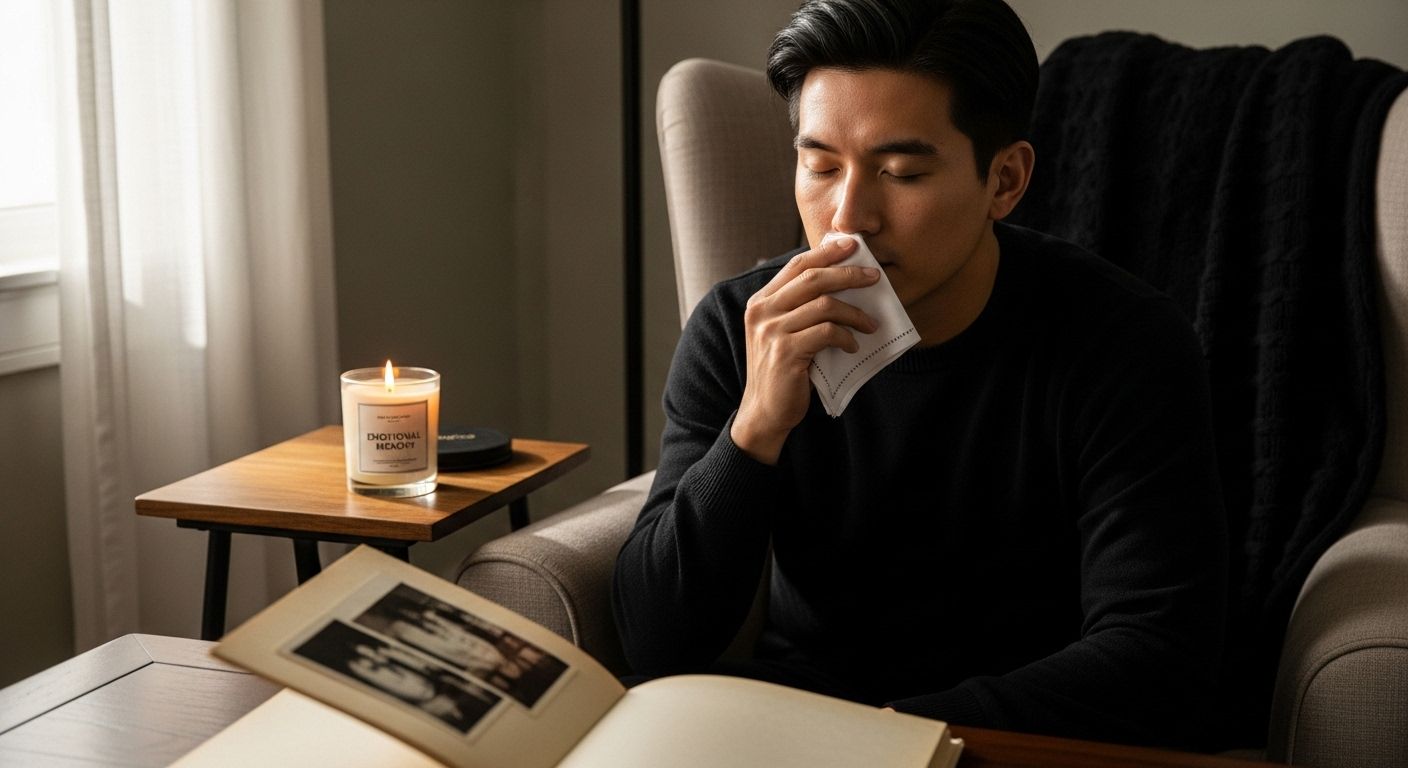
How Storytelling Shapes the Perfume Experience
Storytelling in perfumery represents a sophisticated art form where fragrances become intricate narratives, transforming the sensory experience from simple olfactory perception into a profound emotional journey. Each fragrance emerges as a complex composition, carefully crafted to communicate emotions, memories, and personal experiences through carefully selected aromatic notes.
Compositional Narrative Techniques
Research in design and sensory perception demonstrates how perfumers use strategic layering of scent notes to construct immersive narratives. Top, middle, and base notes function like narrative chapters, each representing different emotional states or moments in a metaphorical journey. Fragrance becomes a language of emotion, where ingredients are carefully chosen words that communicate complex psychological landscapes.
Key narrative composition strategies include:
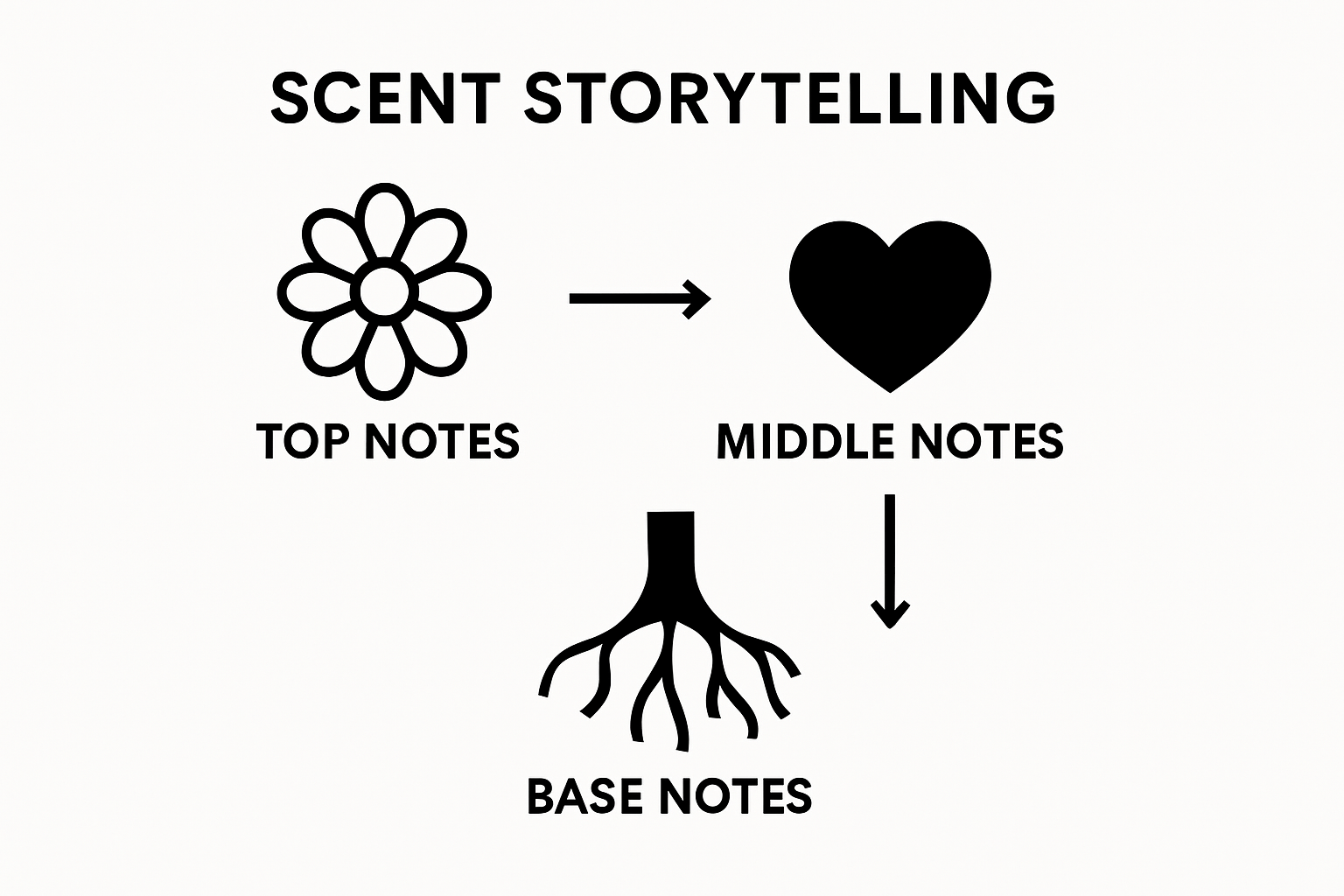
- Emotional progression through scent layers
- Metaphorical ingredient selection
- Sensory storytelling techniques
- Psychological depth creation
Transformative Sensory Experiences
Perfumers design fragrances that go beyond traditional sensory boundaries, creating immersive olfactory experiences that transport individuals through imaginative landscapes. A single fragrance can evoke memories of distant places, cultural traditions, or profound personal moments, making scent a powerful non-verbal communication medium.
By understanding the intricate relationships between ingredients, emotional triggers, and personal memories, perfumers craft narratives that speak directly to individual experiences. The perfume becomes more than a fragrance it becomes a personal story waiting to be discovered, interpreted, and lived through each unique interaction.
The Integration of Culture and Emotion in Fragrance Narratives
Fragrance narratives represent profound cultural artifacts that transcend mere sensory experiences, serving as complex communication channels that encode collective memories, emotional landscapes, and deep-rooted cultural identities. Through carefully crafted aromatic compositions, perfumers create intricate bridges between individual experiences and broader cultural contexts.
Cultural Memory and Sensory Encoding
Research exploring autobiographical storytelling reveals how fragrances function as powerful cultural repositories, capturing historical nuances and emotional resonances specific to particular societies and traditions. Each scent becomes a narrative vessel, carrying inherited emotional knowledge and collective experiences across generations.
Key dimensions of cultural fragrance integration include:
- Emotional heritage transmission
- Collective memory preservation
- Cultural identity representation
- Intergenerational emotional communication
Emotional Landscapes of Olfactory Experience
Perfumers approach fragrance design as a nuanced art of emotional cartography, where ingredients are carefully selected to represent complex cultural narratives. Scent becomes a sophisticated language of emotion, capable of communicating deeply personal yet universally understood experiences. Different cultural contexts imbue fragrances with unique emotional significances, transforming them from simple sensory stimuli into rich, multidimensional storytelling mediums.
By understanding the intricate relationships between scent, emotion, and cultural memory, perfumers create fragrances that serve as bridges between individual experiences and collective consciousness, inviting individuals to explore profound emotional landscapes through the delicate medium of aroma.
Experience the Art of Storytelling in Scent With Adar Perfumes
Have you ever longed for a fragrance that sparks genuine memories and emotions, instead of simply masking you with scent? The article highlighted how traditional perfumes often fall short at moving beyond basic sensory appeal, missing the deep emotional narrative your senses crave. If you are searching for authenticity, personal storytelling, and true emotional connection through scent, the answer lies in the slow, artisanal craft of true niche perfumery.
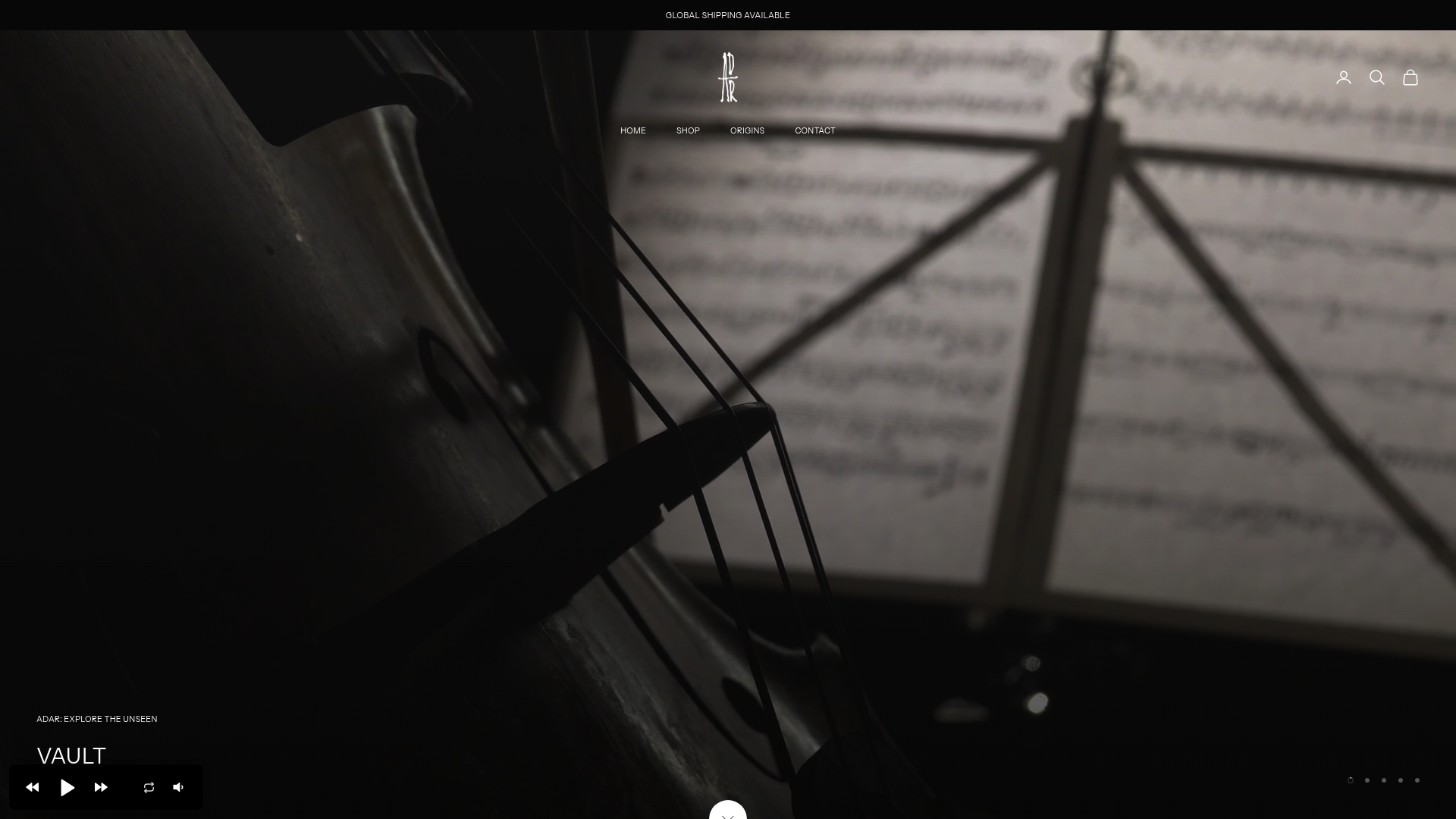
Discover how Adar Perfumes transforms the time-honored tradition of olfactory storytelling into wearable art. Every fragrance is handmade using the rarest ingredients, so each bottle holds not just a scent but a unique story that resonates with your memories, culture, and imagination. The extraordinary handpainted packaging and exclusive materials add even more depth to the experience. Visit Adar Perfumes now to begin your own immersive narrative journey. Dive into a world where scent becomes art and emotion—crafted exclusively for you.
Frequently Asked Questions
What is storytelling in scent?
Storytelling in scent is an artistic approach where fragrances are designed to convey emotional experiences and personal narratives through olfactory sensations, transforming perfumery into a profound communication medium.
How does scent influence emotions and memories?
Scent influences emotions and memories through direct connections to the limbic system in the brain, enabling fragrances to trigger immediate emotional responses and activate autobiographical memories, as demonstrated by the Proust Effect.
What are the key components of a scent narrative?
The key components of a scent narrative include emotional immediacy, memory activation, personal interpretation, and the layering of top, middle, and base notes that represent different chapters in a story.
How can fragrances be used to enhance personal experiences?
Fragrances can enhance personal experiences by evoking memories and emotions tied to specific scents, creating immersive olfactory journeys that resonate with individual histories and cultural backgrounds.

